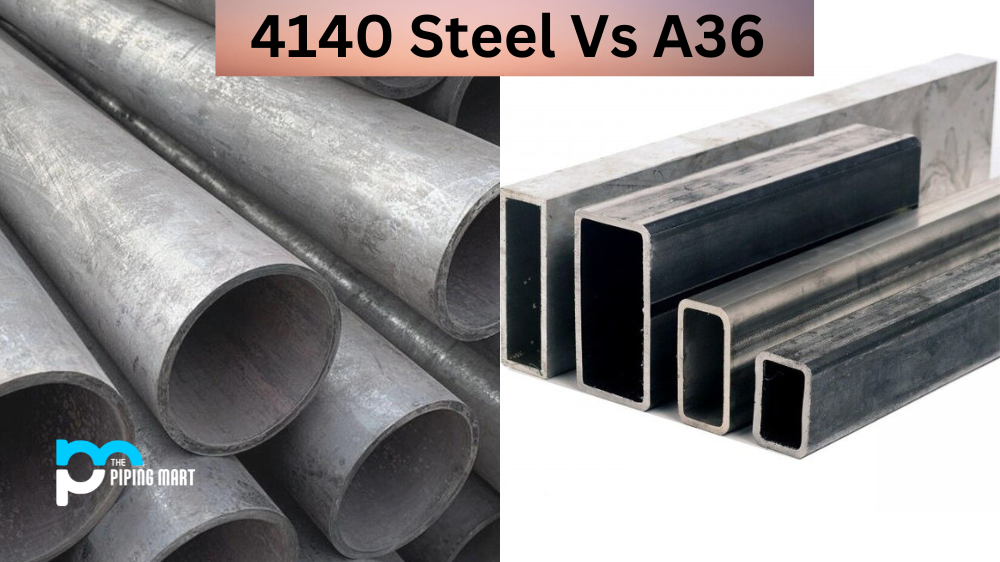When it comes to manufacturing and construction, there is a wide range of materials to choose from. However, selecting the right material for your project can significantly impact its quality, durability, and safety. Two particularly popular materials in these industries are 4140 steel and A36, but what are their properties, and how do they differ? In this article, we will delve into the characteristics of both materials and help you understand their key differences.
What is 4140 Steel?
4140 steel is an alloy with chromium and molybdenum content, making it highly impact-resistant and durable under extreme conditions. It is most commonly used in gears, shafts, and axles due to its high tensile strength and hardness. Moreover, 4140 steel is versatile and can be heat-treated for further strength and wear resistance improvements.
What is A36 Steel?
A36 steel, on the other hand, is carbon steel with a low carbon content, making it malleable and easy to weld. It is commonly used for structural applications such as bridges, buildings, and shipyards because of its low cost and versatility. However, it possesses a different strength and hardness than 4140 steel and may not be suitable for highly demanding applications.
Difference Between 4140 Steel and A36
Strength and Hardness
One of the most significant differences between 4140 steel and A36 is their strength and hardness. 4140 steel is known for its high tensile strength and hardness, making it ideal for applications involving heavy machinery and high-impact resistance. In contrast, A36 steel has a much lower strength and hardness level, especially when compared with 4140 steel. Therefore, 4140 steel is likely the better choice for your project if you require high strength and durability.
Weldability
Another key difference between these two materials is their weldability. A36 steel is relatively easy to weld due to its low carbon content, making it suitable for various welding processes. In contrast, 4140 steel is more challenging to weld due to its high carbon content and alloying elements. However, this issue can be overcome by preheating the material and using a low-hydrogen welding process. Therefore, if welding is a critical part of your project, A36 steel may be more practical, but if you require significant welding strength and not the ease of welding, 4140 steel may be better suited.
Cost
Finally, the cost of each material is another consideration to be made. A36 steel is often considered one of the most affordable materials, making it an attractive option for those looking to keep costs down. Conversely, 4140 steel is more expensive due to its high tensile strength and excellent hardness properties. However, the higher cost may be justifiable when considering the improved performance of the material for highly demanding applications.
Conclusion
In conclusion, while 4140 steel and A36 are popular materials in manufacturing and construction, their properties and applications differ significantly. 4140 steel is known for its high strength and hardness, making it suitable for heavy machinery and high-impact resistance applications. In contrast, A36 steel is a versatile, affordable material commonly used for structural applications. By understanding these materials’ unique properties and applications, you can decide which is best suited to your project.
Rachana is a dedicated and ambitious young woman who has made a name for herself in the metal industry. From her earliest days in the industry, Rachana showed a natural talent for problem-solving and a keen eye for detail. In her free time, She enjoys reading up on the latest advancements in the industry, as well as exploring new ways to innovate and improve upon existing processes.




